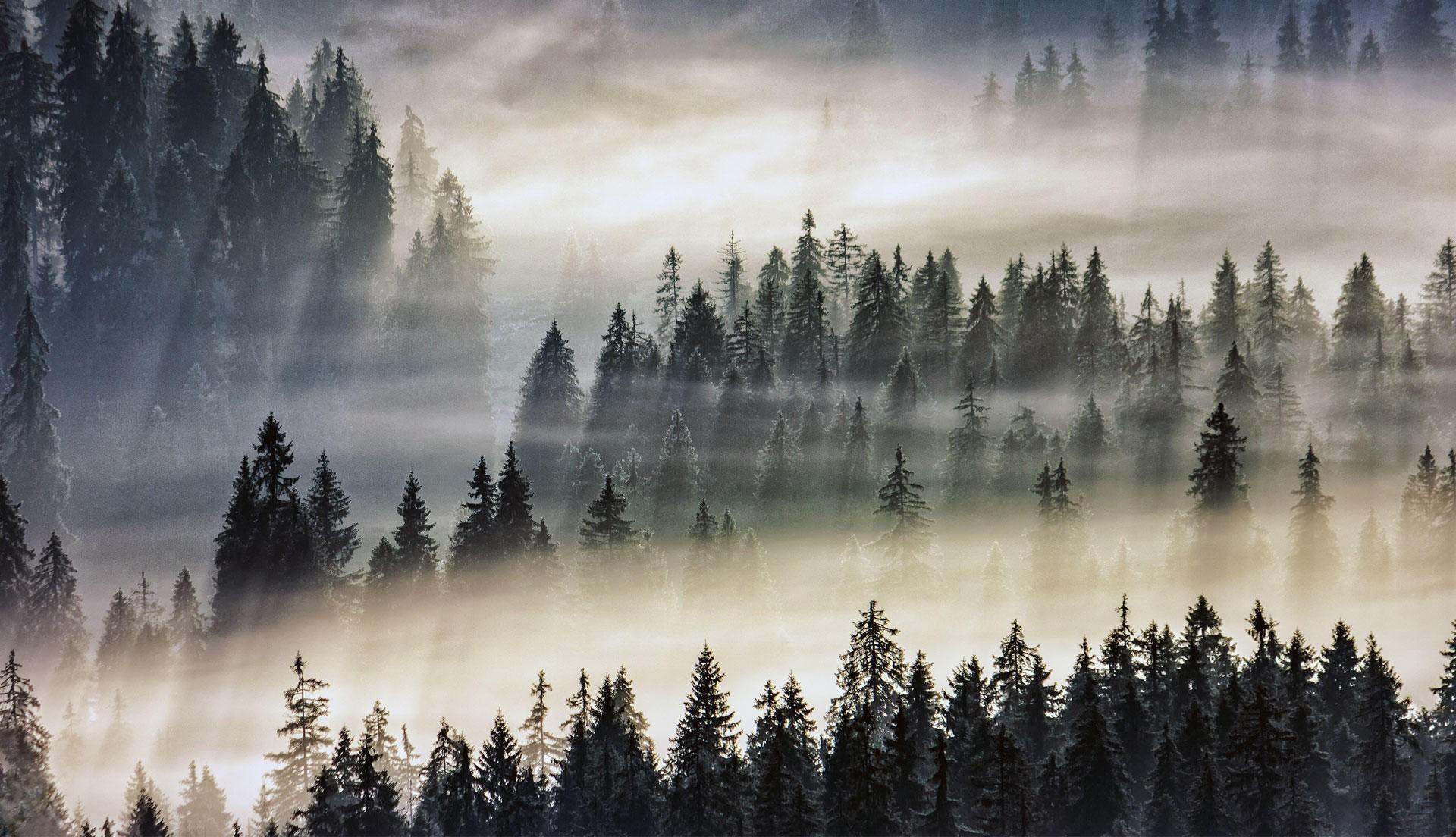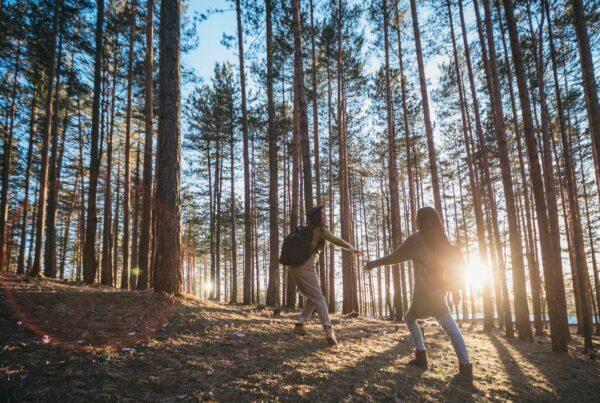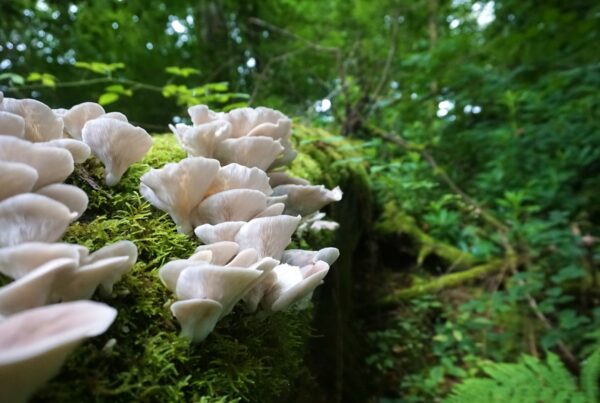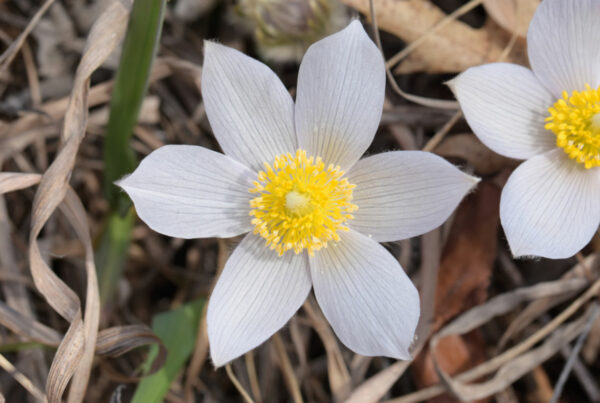“Rewilding” means to make wild again. The term is usually used to describe restoring ecosystems and reintroducing animals to their natural habitat.
But there’s another form of rewilding that’s pivotal to the survival of humanity, that’s human rewilding. Ecologist Marc Bekoff describes human rewilding as being “all about rehabilitating our hearts and souls and love for ourselves, other animals, and the places we call home.””
Highly domesticated people who live hypnotized in a screen world aren’t going to save the Earth or themselves. With senses highly tuned to the rectangular 2D digital screens, we become dulled to the wild magic of the Earth.
To survive the coming apocalypse induced by modern industrial culture and a suicidal scientific materialist worldview that values ecosystems merely as natural resources to be harvested and turned into consumer products — we need to rewild our senses and reawaken our love of life.
A Crisis Of Biodiversity Collapse
We can solve our ecological crisis and reverse climate change by rewilding our forests and reconnecting people to nature.
Forests are the lungs of the Earth, inhaling carbon from the atmosphere that they store in their wood and exhaling fresh oxygen for us to breath clean air.
Yet, we are chopping down about 15 billion trees a year and planting about 9 billion. That’s a net loss of 6 billion trees a year. It is estimated that the world loses between 74,000 and 95,000 square miles of forest a year, which is an area the size of 48 football fields lost every minute.
Around the world, major biodiversity zones that are crucial to the ecological equilibrium of Planet Earth’s climate like the Amazon Basin and the Boreal Forest are rapidly shrinking.
But what if we could reverse this loss of our global forests and actually start rewilding the edges of these massive biodiversity zones again?
We have the capability to reverse the dangerous feedback loops that are pumping increasing amounts of carbon into our atmosphere and disrupting the ecological balance of our Planet.
Deforestation is still dangerously high in the most biodiverse equatorial zones of Brazil, Indonesia and the Congo that are the most important for climate balance.

A Solution: Rewilding The Global Forest
This where the idea of rewilding comes in. Rewilding is defined on Wikipedia as “large-scale conservation aimed at restoring and protecting natural processes and core wilderness areas, providing connectivity between such areas, and protecting or reintroducing apex predators and keystone species.”
The best way to rewild the Earth is to replant our forests and in the process reconnect our cultures and societies again to their roots in our land. A global effort to replant our forests and restore the biodiversity of regions not being used by agriculture or human settlement can help us reverse the most dangerous feedback loop we face, which is the exponential loss of global biodiversity and a huge increase in species extinction in just the last generation.
If each person on the Planet could plant 1 tree a year, we would be able to reverse the loss of our global forests and from there we can start to restore them. We can accelerate this process by strategically replanting and protect existing forests in the most ecologically disrupted equatorial regions. Tropical hardwoods and mangrove trees that grow in tropical regions also offer by far the most reduction in carbon in the atmosphere.
The bulk of this effort can easily be funded by the people of developed economies because we have the largest carbon footprints, which measures the total carbon emissions per capita that a country generates from burning fossil fuel energy to sustain their standard of living.
Here is a breakdown of the different carbon footprints of different societies:
The carbon footprint of the average American is 16.1 tons per year.
That is twice as high as the average European.
About 4 times the average Chinese.
More than 8 times that of the average Indian.
Nearly 20-30 times that of most Africans.

Restoring Our Ecological Heritage:
The foundation of any culture is found in its unique soil, biodiversity, and geography. Today, in the endless pursuit of money, the fog of status anxiety, and the trance of digital screens our view of ourselves and our place in nature has somehow become warped.
Few people today understand how their food grows or the strain by others to sustain their high standard of living, or how debt fuels all this madness by encouraging us to live beyond their means.
The big question we face today is whether this culture of instant gratification and social comparison is giving us temporary pleasure at the cost of long-term happiness? We are borrowing endlessly from future generations and impoverishing the environment in such a way that may last millennia.
We don’t just need to replant a few forests. We need to spend time in them, alone and collectively, to understand what we are destroying and how we may be able to restore the ecological balance. In forest ecosystems, we can find the answers to how nature sustains biodiversity and ecological balance.
We can use our forests as classrooms, gyms, and laboratories to test new forms education that reconnects us with the Earth. Together, we can get children and adults moving naturally and playing outside so we can reverse the degenerative health effects of the sedentary lifestyle that is the source of so much physical and mental illness in our society.

Biodiversity Learning Zones:
In his landmark manifesto Half-Earth: Our Planet’s Fight for Life, the famous biologist and naturalist E. O. Wilson proposes a grand idea of setting aside half of Planet Earth for nature to thrive.
As the human population expands beyond 7.6 billion people, we are using more resources and the result is the sixth great extinction event where populations of animals, birds, and insects are in massive decline. We may be the next species to face extinction if we don’t take responsibility for protecting our global ecosystems.
E.O. Wilson’s offers a bold proposal for establishing huge biodiversity parks to protect, restore, and connect habitats at a continental scale. These massive biodiversity parks could be like national parks on a much larger and more interconnected scale.
These massive biodiversity zones could become “classrooms” for people to learn about the ecology of their homelands through direct experience of the ecosystems in action. They could also be used to empower a creative class of both indigenous and naturalist teachers to restore ecological knowledge in society.
Here are four proposals to rewild some of the major wildlife corridors of North America. Expanding these wilderness corridors is essential to restore animal populations and bird while maintaining the ecological balance of the North American continent.

- 10 Sustainable Travel Trends Driving The Future of Tourism - March 9, 2025
- 10 Tips To Sell Out Your Transformational Retreats In 2025 - February 20, 2025
- Build 10 Habits That Free Up Your Time With Mindful Coaching - February 11, 2025





